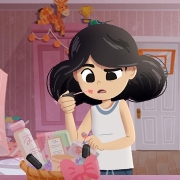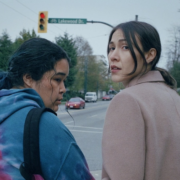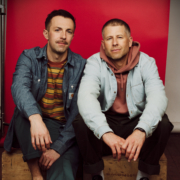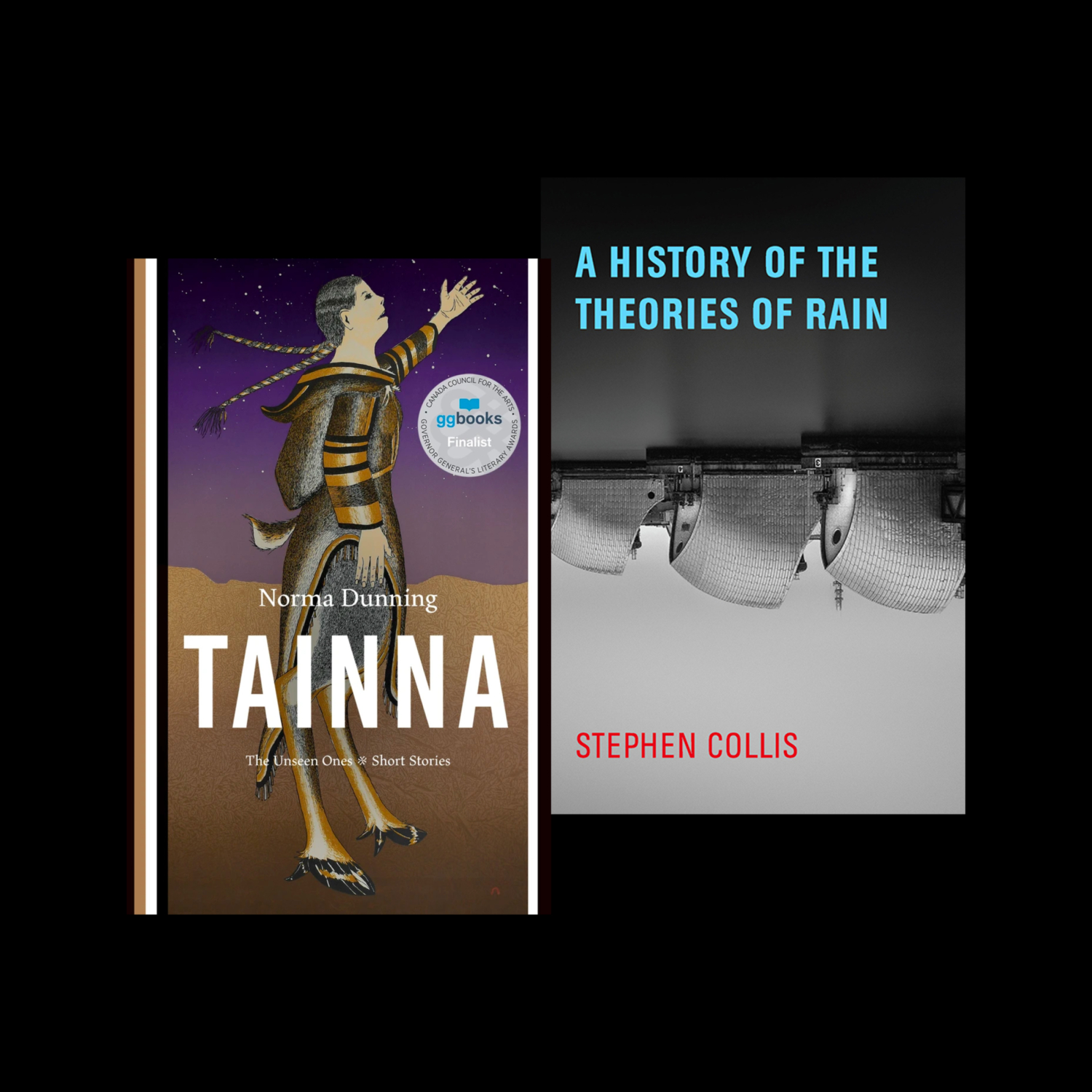Set against the crystalline Northern landscape of Yellowknife, Into Light directed by B.C.’s Sheona McDonald, captures a season of change as a mother and daughter navigate the complexities of gender identity together.
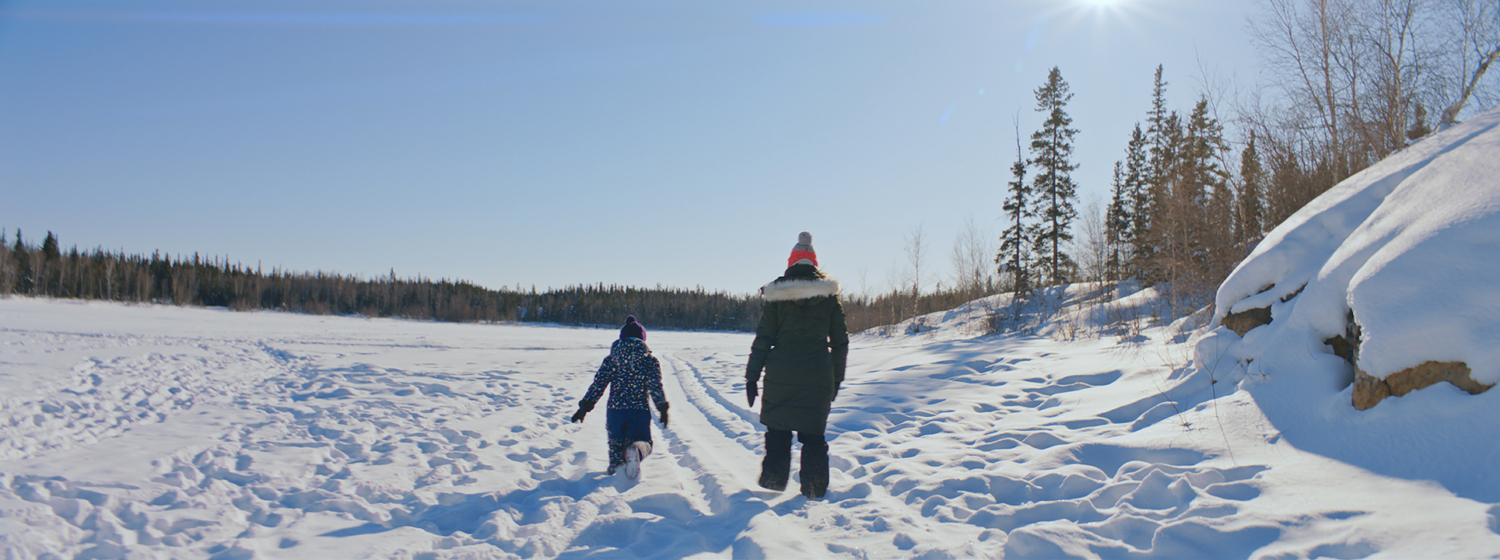
Into Light (2021), National Film Board of Canada
Co-written by the subject and McDonald, the film offers one family’s unique perspective while they learn and grow together as a child reveals their true self. While protecting their identities, the film takes a visual narrative approach with the mother and daughter, as they explore seemingly simple items—a sparkly silver dress, hair barrettes—to more complex navigations of names and gender markers.
Inspired by the daughter being born at the coming of springtime, the film mirrors the elemental changes of the landscape—winter into spring, darkness into light—parallel to this extraordinary journey. Watch a clip from the short film below, and read about Sheona and the mother’s process in creating and sharing this story.
Into Light is screening at DOXA Documentary Film Festival running from May 6th-16th.
[su_vimeo url=”https://vimeo.com/489001032″]
Into Light tells such an intimate story, what was the catalyst that made you want to create this film?
This story unfolded before me and only required me to initiate it in film form. I watched a dear friend wrestle with how to navigate a new landscape with her child (literally and figuratively). She did so with grace and diplomacy, but I also saw her challenged to find resources and reassurance that she was making the right decisions for herself and her daughter. I knew the child well enough to completely understand from day one that she knew who she was and what she wanted, and the self that she wanted everyone to acknowledge was clear. It was quite remarkable to witness.
One day I asked the mother if she would want to tell her story in a film. We had the advantage that she knew me and my work already, so trust wasn’t something we had to establish (though, of course, it’s not a given, and communication was essential to maintaining that core trust). Honestly, I anticipated that she would say no. I knew her as a deeply private person with no interest in being in the spotlight. However, she was driven to tell her own story by something deeper: she wanted to help create a resource, and part of a conversation, that she wished she’d found when she was looking.
The catalyst was instinct and opportunity.
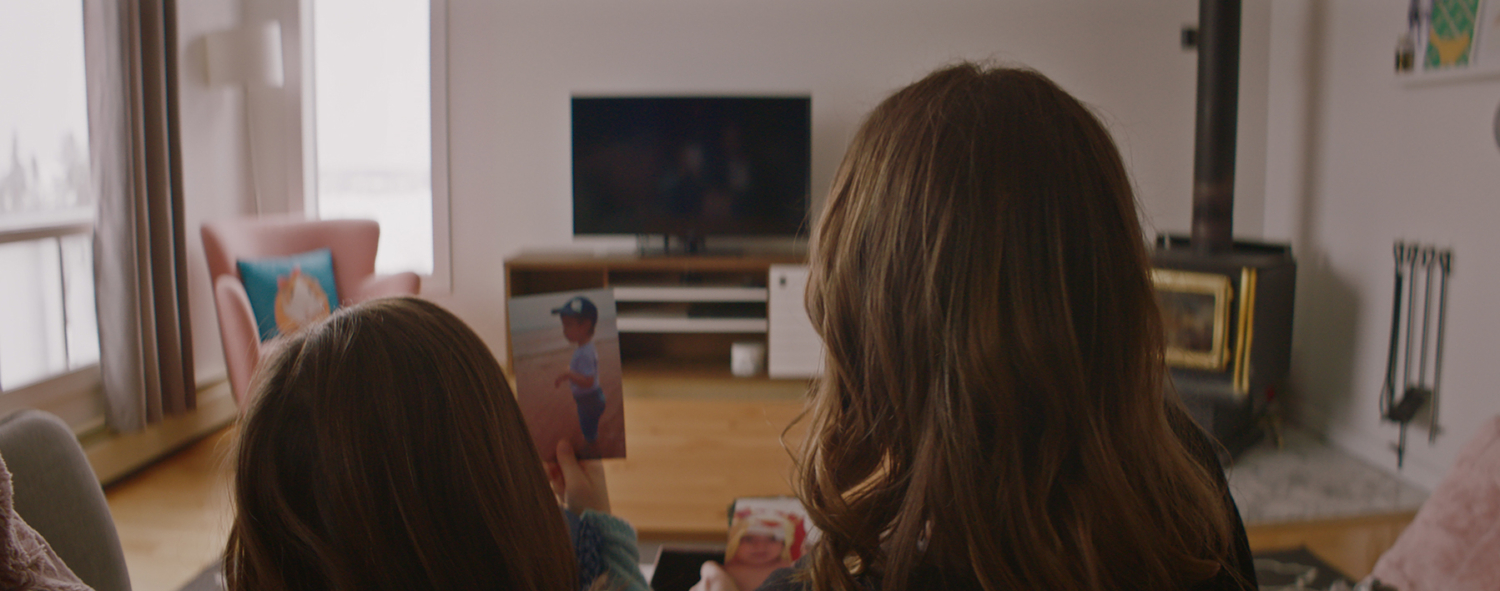
Into Light (2021), National Film Board of Canada
The film protects the identity of the subjects, what did your collaboration with the subjects look like to frame the portrayal of their narrative?
The film was conceived with the knowledge that we would likely have to keep the identity of the subjects protected. Protected rather than hidden, because we feel and see enough of them that if you know them, you know who you’re watching and experiencing. This part of the process was an ongoing conversation and collaboration about what would feel and be okay. Initially, my concern as a filmmaker was about how to connect an audience to the story without their faces and expressions. I considered animation to create characters, and we played in that lane for a bit, but it didn’t feel right. Nor did recreations.
In the end, we relied on a range of tools available to us. Simon Schneider (DP) shot the interviews in a way that isn’t shadowed, and instead is bright and full of character and personality while also maintaining intimate anonymity. I think this provides brightness and access rather than shame and darkness, which is often associated with not seeing subjects. We relied on their voices and stories, we relied on capturing their relationships, we relied on portraying the landscape and their world, we relied on exceptional editing and sound design and music.
In terms of collaboration, the mother co-wrote the story with me and was consulted at every turn. She kept her daughter in the loop and they discussed matters too. We just continued a conversation all along the way with the goal of creating a beautiful film, a well-told, intimate story, while always keeping the human beings behind the story, their feelings and safety, top of mind and priority.
Into Light shares a beautiful perspective on parenting and gender-representation, what do you hope audiences take away from watching this film?
My only hope for an audience is that they receive and take to heart a very simple message: let people be who they are on the inside. When I interviewed the child for the film, I asked her many questions, I tried different approaches to get different answers, and each time she returned with only one message: “parents should let their children be who they are on the inside.” I realized it truly was that simple at its core.
Beyond that, there is also the potential to explore ideas of trust. Trust parents to know their children, trust children to know themselves, trust that someone knows how they feel about themselves and their lives better than you do, know what’s your business and what’s not.
I think if we strip away bias, judgement, assumption, and pre-conception, this becomes a film about a small family living in the North. If we don’t feel like someone’s gender representation is our business, then this film becomes something pretty to watch.
Ironically, I hope this is a film that, over time, audiences will find boring, redundant and, ultimately, irrelevant, because that will mean we’ve come to a place of greater acceptance and understanding. To be honest, I have a lot of faith and hope around this for the generation being raised now; my children have language, tolerance, compassion, understanding and nonchalance, which were not part of my growing up—I’m hopeful we’ve come a long way in a short space of time and we can continue to move forward.
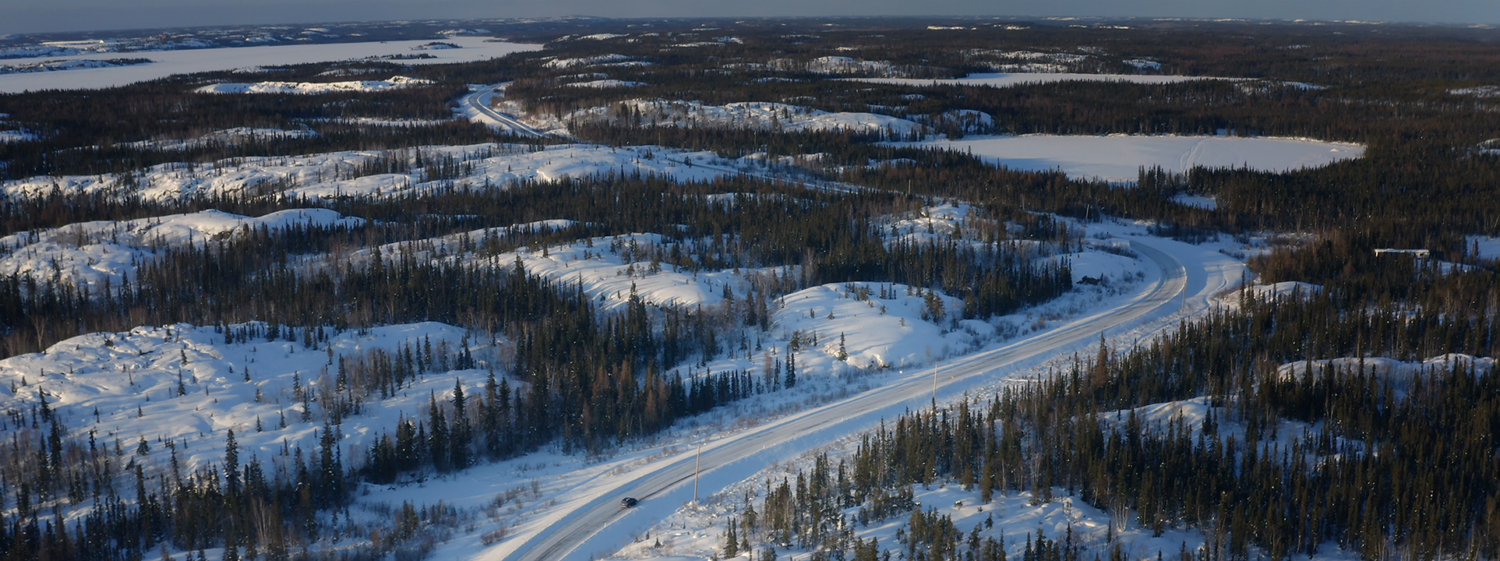
Into Light (2021), National Film Board of Canada
The backdrop of Yellowknife employs a visual, and textural language to the expression of Into Light, can you tell us how that informed your storytelling?
From the get-go, this film was conceived with the north (The North) playing a significant role. We considered dark and light, shadows, seasons, ice, texture, warmth, cold—being bundled up and being bundled up and then being unencumbered, free to reveal”…. The child was born in the North just as spring was arriving—it felt significant. The remoteness of this northern community provided space for this family, and it also provided the cover of darkness and time; alternatively, a small community offers fewer places to hide and less anonymity. All of these things were key factors in the life of this family and in the timing of things that happened to them.
I think the texture of the North provides beauty and space for the film to breathe, too—a simple, beautiful landscape in which to tell a simple, beautiful story.
Do you have a favourite takeaway from the creation of this film?
Trust and gratitude—simplicity.
Sounds boring, but I feel very little ‘ownership’ of this film; calling it ‘a film by me’ feels indulgent. I feel like, and felt like, I was a conduit through which the story was able to flow and be expressed. I asked the mother whether she might want to share her story, and as time went on and the child got older it became clear it would be their story.
Things happened quite easily on this project, which isn’t always true in the making of a film.
Teri Snelgrove at the National Film Board got on board very quickly and we were underway. All of the brilliant creative people came on board at the right time with the right ideas, passion and commitment. We shot the film just before the world went into lockdown (literally March 6–9, 2020, we were in Yellowknife). When it looked like the pandemic was going to linger, I suggested we try and put it together with the material we’d already collected, rather than wait to film again. We did and it worked perfectly.
I just had to trust it would all come together. I had to get out of the way of it and allow it to flow and become.
The family who shared their story had to be brave, and they were, and I’m grateful for their trust and love and openness. The people who showed up to be part of the creation all came with love and compassion and excitement and kindness and a real commitment to beauty, truth and grace. I am left with nothing but gratitude for how it all unfolded and the people who arrived to make the film with me.
One final thing that is important to reference around ‘take-aways’: I want to acknowledge that maybe in the film, maybe in my interviews or conversation, or my thinking or communication, I will use the wrong words, the wrong explanation, the wrong terminology. I am an ally of the LGBTQ2S+ community but am not a member and, therefore, this is a film about a transgender person created from outside the community rather than in it. However, I am committed to learning and growing and asking and acknowledging. I am aware I might not always get it right, but that there’s power in knowing that, and in being patient with myself to pay attention and understand. We can be patient with each other, we can educate each other, we can learn from each other and we can grow in trying to understand each other—and that’s really the best we can hope for, I think, whether it be around gender representation or otherwise.
How have you stayed creative during the pandemic?
Funnily, I’ve been fortunate enough that this hasn’t proved to be one of the challenges I’ve faced during the pandemic. Work-wise, I was able to complete this film and another feature-length doc that I had in the works called Dead Man’s Switch a crypto mystery (in a similar manner, I said ‘let’s see what we can do with what we have’). In addition, I had a dramatic script optioned last year, so had to spend time doing some re-writes there. I also decided in January of 2021 that I would experiment with writing a novel and am now in the middle of trying to figure out chapter 18. I am buoyed by the idea that if I sit down and put words on a page, soon I’ll have pages, then chapters, then a book!
Outside of work, I’ve tried some new things, too: skate skiing and golf. I also swam in the ocean all winter long as an experiment and, with three kids at home, we’ve worked to keep each other engaged, connected and on track.
Watch now
Stream Into Light for free in Canada here
Learn more
More about the film | Into Light Electronic Press Kit
Sheona McDonald | Website, Twitter, LinkedIn
National Film Board of Canada | Website
National Film Board | Twitter, Instagram, Facebook

